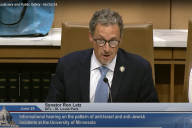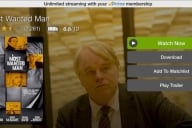You have /5 articles left.
Sign up for a free account or log in.
Four decades into the “technology revolution in higher education” that began with the arrival of PCs and Macs on college campuses in the early/mid-1980s, provosts/chief academic officers (CAOs) are slowing (but significantly) emerging as increasingly influential (and essential) digital leaders at their institutions.
The academic leaders currently serving as (or aspiring to be) as provosts/CAOs have come of age – personally, professorially, and professionally – with instructional and administrative technologies that are now ubiquitous across higher education. Indeed, some the undergraduates of 1984 and 1985 who purchased the first generation of dramatically discounted personal computers sold to college students may now be among the age “55 and 60 something” faculty and administrators at campuses across the country. (Are you old enough to remember the $1000 Macs sold in college bookstores in decades ago? Were you one of the students who bought a $1000 Mac in 1984 or 1985?)
Given the history of campus IT initiatives over the past four decades, the CAOs now engaged digital pedagogy initiatives could well be described as the third wave of digital leaders.
In response to the arrival of microcomputers four decades ago, the initial wave of institutional digital leaders were clearly techies. As a group, they were largely white guys with engineering or computer science degrees. The technology slowly migrating from the computing center into campus labs and classrooms during this period was new, challenging, laden with potential, fueled by great aspirations – and was also (and often) problematic. (User friendly DOS, anyone??) The reasonable assumption was that IT leadership required technical expertise: ergo, the techies emerged as campus IT leaders. The techies understood these “complex and difficult” technological issues and would, presumably, provide the leadership required to navigate these new IT challenges and also explain these issues and technologies to the rest of us.
Beginning in the early and mid-1990s, we saw the slow emergence of the second-wave digital leaders. These men and women were academics who migrated into technology from (non-technology) disciplines. They were often current (or recent) faculty drawn to the compelling potential of technology and digital learning as a resource for instruction and scholarship in their individual disciplines. The second wave leaders understood that the key technology challenges confronting their institutions were not, per se, about technology. Rather, the second wave leaders recognized that the key tech issues for most campuses involved planning, policy, and funding. They focused on leveraging technology resources to address operational issues that included institutional strategy, digital transformation, instructional priorities and opportunities, administrative systems, and support services.
And many campuses now have provosts emerging as the third wave of digital leadership. CAOs as third wave digital leaders do not supplant the CIO, but rather complement and supplement that role. Focused on student success, institutional impacts and outcomes, and digital learning, the emerging provost/CAO engagement and leadership with digital learning and IT understandably reflects the programmatic responsibilities and priorities of the CAO office, as opposed to the operational responsibilities of CIOs.
There are a number of ways to explain the rising role of CAOs as digital leaders. In some ways it was perhaps inevitable. Compared to the early days of the “tech revolution,” today’s CAOs came of age – personally, professionally and professorially – with the consumer and campus technologies which are ubiquitous.
There is also the rising recognition of provosts/CAOs as critical institutional change agents. Academic programs and related operations—teaching, learning, and scholarship—traditionally are the domain of the provost/CAO. Indeed, scholars of higher education and campus culture view CAO engagement and leadership as essential for any major changes in academic strategy, institutional mission, or other related initiatives. As noted in "The Path to Change Runs Through the Provost's Office” (Chronicle of Higher Education, 2015), "if a campus is going to pursue new priorities, fix systemic problems, or adopt innovation on a broad scale, a provost will most likely be directing the charge."
Additionally, the student success movement has also been catalyst for the rising interest in and engagement with digital learning and digital transformation issues. Provosts sit at the intersection of the factors and forces that fuel the student success movement: accountability, analytics, academic programs, pedagogy, retention and degree completion, and learning outcomes. As we begin to see digital technologies offer empirical evidence of impact and effectiveness, particularly in gateway courses, it is not surprising that digital learning would become an interest of and priority for CAOs.
These third wave issues were among the catalysts for the very successful (if sadly short-lived) Digital Fellows Program funded by the Bill & Melinda Gates Foundation. The two-year fellowship provided a journey of digital discovery and professional development for some 30 provosts/CAOs who wanted to learn more about the potential of digital pedagogy and leverage their leadership position to help their campus scale instructional interventions and digital learning, focused on gateway courses.
Among the Digital Fellows program participants and also among the provosts/CAOs at other institutions who lead digital pedagogy initiatives, there is growing recognition that "going digital" requires faculty and departments to build or bake in rather than bolt on. In other words, simply appending digital resources to current syllabi is not an appropriate or necessarily effective strategy to leverage digital pedagogy. Rather, the conversation about "going digital" involves a larger—and for many CAOs and their institutions, long-overdue—discussion about course redesign: how students (of all ages and backgrounds) learn in this digital age, what they learn, and which resources and experiences support and enhance their learning. (Please click here for additional information about the Digital Fellows Program. I served as the director of this project.)
Consequently, “going digital” requires a thoughtful, long-term strategy focused on both initial implementation and efforts to scale -- within and across academic programs. Below are some of the key “attention must be paid” challenges that confront CAOs who are (or aspire to be) digital leaders.
- Innovation Requires Infrastructure. The literature on the diffusion of innovation tells us that innovation requires infrastructure. The infrastructure supporting digital pedagogy goes beyond digital applications to include significant user support for faculty innovators, instructional designers, and the departments that commit to the thoughtful deployment of digital instructional resources.
- Assessment is Essential. Data from the annual Campus Computing Survey confirm that most campuses do not “have a formal program to assess the impact of IT in instruction and learning outcomes.” If we hope to move forward with digital pedagogy, we must have good data and empirical evidence if we are to know what we have done well – and what we must do better.
- Students Must Have Access to Digital Platforms. As noted in last week’s Digital Tweed post, Digital Content vs. Digital Access, significant numbers of provosts, CIOs, and faculty report that campus efforts to deploy digital pedagogies are impeded because “many of our students do not own the digital devices (computers or tablets) they need to access digital content and resources.” Consequently, going digital – for content and pedagogy – must also address digital access.
- Faculty Require Recognition and Reward. Data from The Campus Computing Project reveal that the vast majority of the two-and four-year American colleges and universities have not expanded the algorithm for review and promotion to include faculty efforts at instructional innovation and technology. Provosts are in a unique leadership position to provide recognition and reward for faculty who want to include digital pedagogy as part of their scholarly portfolios.
- Thinking Long and Large. CAOs should avoid the temptation for ad hoc deployments that are not linked to larger, long-term institutional efforts and pedagogical goals.
Higher education has long-harbored great aspirations for the potential of information technology and digital resources to enhance pedagogy and transform the learning experience. And we now have a growing body of both empirical evidence and institutional experience confirming that there are real opportunities to leverage digital pedagogies and resources in gateway and other courses that will enhance student learning and improve both student and institutional outcomes. Provosts/CAOs should be actively involved in leading these initiatives.
ALSO OF POTENTIAL INTEREST:
- Episode #52 of the TOPcast podcast from the University of Central Florida, titled “Higher Ed’s Third Wave of Digital Leaders.” I join Tom Cavanagh and Kelvin Thompson for a conversation about the evolving nature of leadership in higher ed’s technology-mediated teaching and learning initiatives. A key theme is the sustainability of digital learning efforts.
- The EDUCAUSE Review (February 2019): Green and Hatkoff, “Exploring the CAO Role in Digital Learning.”
- Digital Tweed. Innovation and the Fear of Tying (July 2017)






